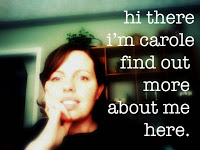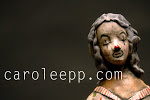by Carole Epp | Mar 30, 2014 | call for entry, emerging artist, job posting, monday morning eye candy, movie day, residency opportunity, show us your influences, technical tuesday
The
North Carolina Pottery Center is offering a two year Residency for one
potter/ceramic artist, beginning no later than August 1, 2014.
The
Residency is designed to help the creative and financial development of
an individual in pursuit of establishing their own studio practice.
A
recent grant from the Windgate Charitable Foundation has enabled the
Pottery Center to reinstitute its Artist-in-Residence program.
Who can apply?
Candidates with BFA’s, MFA’s, or equivalent life experience, are invited to apply, by April 15, 2014
Where and what is the North Carolina Pottery Center?
Located
in the central Piedmont town of Seagrove, NC, the North Carolina
Pottery Center is the focal point of a bustling pottery community of
about 80 nearby potteries.
The
Pottery Center serves the wider community of North Carolina potters and
pottery enthusiasts, and promotes public awareness and appreciation of
the history, heritage, and ever-changing tradition of pottery making in
North Carolina through educational programs, public services, collection
and preservation, and research and documentation. Please visit
www.ncpotterycenter.org
Facilities
The
Center sits in an attractive, wooded lot and consists of three
buildings. The remodeled Voncannon House (pictured above), which
contains living space (bedrooms, kitchen, laundry facilities, etc.) for
an Artist-in-Residence and periodic interns, office space for the
Seagrove Area Potters Association (SAPA), and a collection of resource
materials.
To the
north, across a spacious parking lot, is the 6,000 square foot main
Museum building, which contains exhibition space, a gift shop, offices, a
kitchen, and rest rooms.
Nearby
is the 1,500 square foot Education Building, with wheels, electric
kilns, and other clay-working equipment. And on the hillside just below
it are two working, wood-fired kilns: a traditional groundhog and a
two-chambered catenary arch kiln.
Details of the Residency
The
Artist-in-Residence will live in the Voncannon House, and will pay no
rent, but will pay for utilities while there. They will be responsible
for basic maintenance and cleanliness of the living space.
They
will have access to all facilities in the Educational Building,
including wheels, electric kiln and the two wood-fired kilns. Residents
are encouraged to bring their own equipment.
All clay and
glaze materials, and other pottery supplies for their own work, will be
purchased by the Resident. A standard fee will be levied for each use of
the wood-fired kilns, and residents will follow NCPC policies regarding
repairs and tidy up.
They will be required to work for the
Pottery Center 16 hours a week. This will include two half-days a week
(8 hours) in local K-12 school programs, while schools are in session,
and the remainder of the time in activities relating to the Pottery
Center (like helping at exhibition openings, helping with educational
and other research projects, and other tasks at the discretion of the
director). However they may not find other supplementary employment
outside of the Residency, and are expected to be full-time studio
artists.
Engagement with the staff and the wider facility is encouraged.
Residents
will be encouraged to network with the wider Seagrove community of
potters for professional development and social activities.
They
will be encouraged to sell work in area craft fairs and stores, and
will be given an End-of-Residence Exhibition at the Pottery Center. They
will also be able to sell work at the Pottery Center’s gift shop.
Their activities will be promoted on the Pottery Center’s website and social media outlets.
The Artist-in-Residence will receive $1000 a month for living and material costs.
The determination has been made that no pets, other than legitimate service animals, will be allowed.
Online Application Process
The online application process asks for the following information, please be prepared to enter that information.
1. Basic Information
2. Educational History
3. Resume
4. Artist Statement
5. Letter of Intent
6. References
7. Media
– Ten images files will need to be submitted during this part of the
process. For good image quality and a fast upload, your image files must
be sized around 1800 x 1800 pixels at 72 dpi (approximately 6″ x 6″ at
300 dpi). Please do not submit images smaller than this. Each image
should be no larger than 5mb. Image files must be named using the
following pattern: first initial last name file number. (i.e.,
jsmith01.jpg, jsmith02.jpg, etc.)
by Carole Epp | Mar 30, 2014 | call for entry, emerging artist, job posting, monday morning eye candy, movie day, residency opportunity, show us your influences, technical tuesday
Loose, slightly humorous, and
unsettling illustrations animate my ceramic artworks. I choose to draw
portraits of people’s hidden lives, magnifying the people’s features and the
private moments of their lives.
Currently, I am exploring
the obsessive collection of things—hoarding, and how this fixation interferes
with the quality of daily life and relationships. Growing up, we had a lot of
stuff; overflowing boxes of papers, small mountains of clothes, and a cat for
every family member. Frequently moving throughout my life has forced me to evaluate
my relationship with my possessions. I incorporate multiple layers of surface
to create a crowded environment for the narrative. Much like hoarding
challenges home as comfort, the addition of exaggerated ornamentation and form
challenges the comfortable feeling of function, engaging the viewer to
contemplate his or her relationship to objects.
https://www.wix.com/catiemiller/ceramics
by Carole Epp | Mar 29, 2014 | call for entry, emerging artist, job posting, monday morning eye candy, movie day, residency opportunity, show us your influences, technical tuesday
Artist Statement:
The most recent body of work has stemmed from a
kind of ceramic folklore involving peoples’ initial discovery of the
material. Before people fired pots they were a mobile society of basket
makers. As they began to cultivate the land and harvest a greater
surplus of grain they required more containers that would be resistant
to rodents and the open air. They lined their baskets with clay and in a
serendipitous event a fire destroyed most of their
material possessions but left them with some insight. The interior of
that basket became the first ceramic pot. Beyond its potential as a
prototype for their future, in its hardened exterior bore the
impressions of their past. It became a fossil to an ephemeral and mobile
society; a momento to a new culture that would seek eternal life
carving their name in earth.
The range of information this object says about
their society’s soft culture has lead me to find new meaning in our
material culture. If one can deduce that a mobile society produces
impermanent objects from ephemeral materials, and sedentary society
produces more permanent objects from archival materials; than what is to
be inferred from a culture which produces disposable objects from
permanent materials?
zachbalousek.com
by Carole Epp | Mar 29, 2014 | Uncategorized


“My interest has remained inconveniently multi-faceted in most things ceramic – from its misty prehistory, when only clay and gods mattered, to the subsequent historical offerings from many lands. Food and tea presentation, clay and glaze research, the art of throwing, the art of handbuilding, kilns, riverside shards, emissivity, the smell of old clay, on and on. The straight path to the studio from the house is necessarily most serpentine some days. Some months of the year, though, make it much simpler. When the days grow warmer I work much more outside, where pots dry more quickly. I become a potter and become familiar again with muscle and ache. From November on, when things are freezing solid outside, body activity slows down and more cerebral struggle takes its place. A farmer might go curling during this time. I suppose I go handbuilding. This sequence has been part of my making for well over 30 years. The only thing I can see that has changed is more honing, more reflection, more revisiting old and new places in my mind, and less guilt about the now petty.”
– John Chalke

























